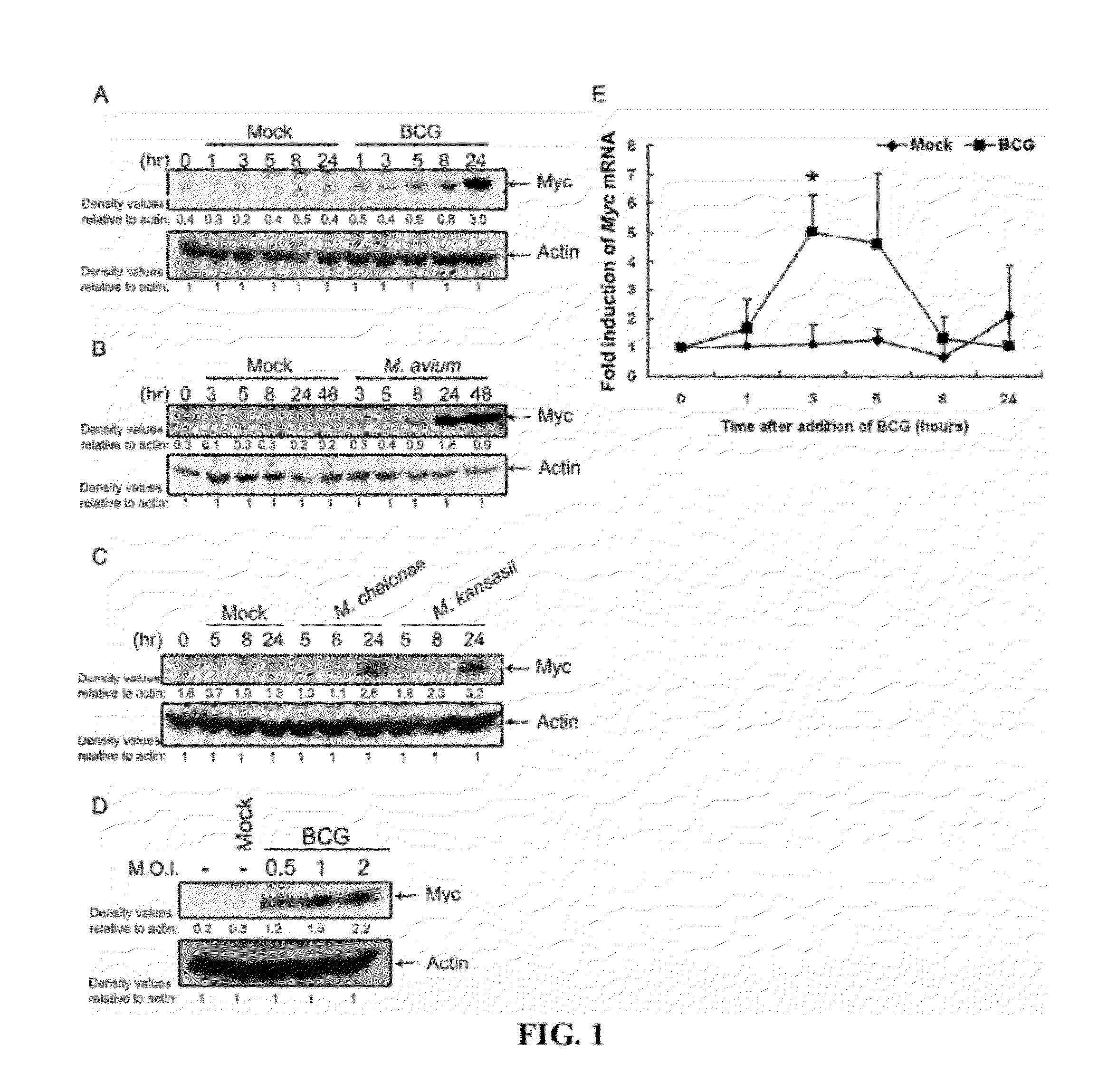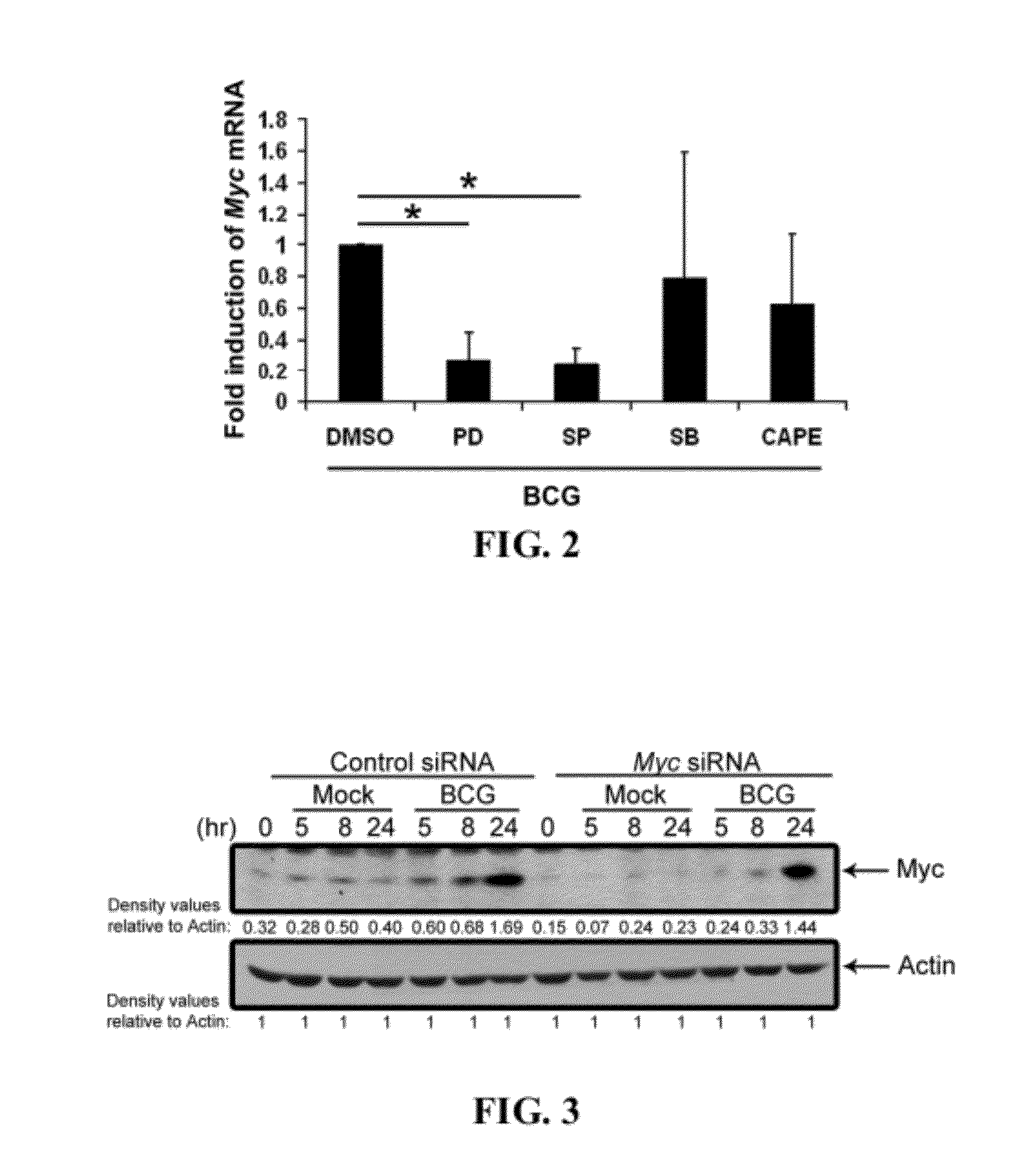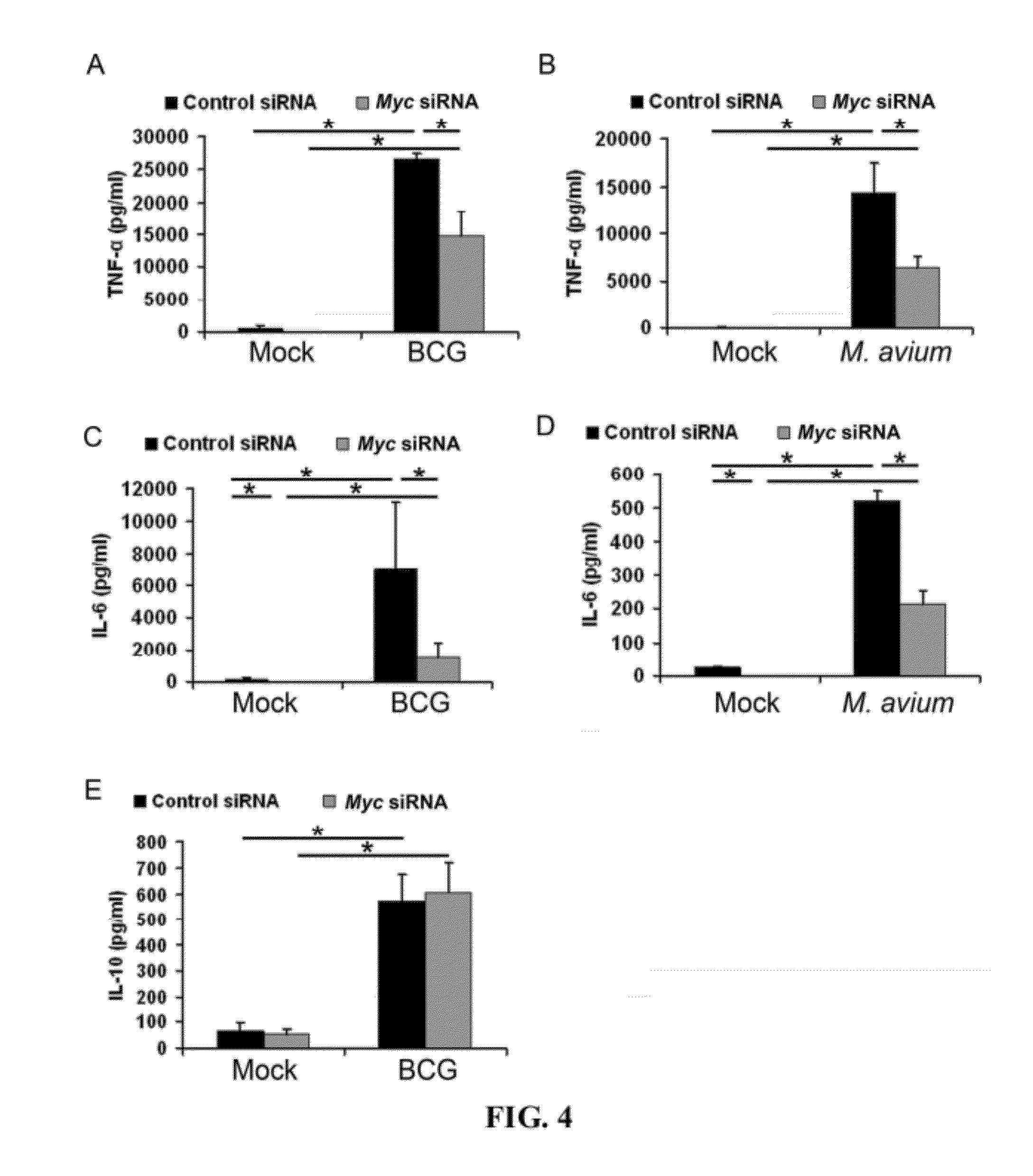Use of cytoplasmic c-myc for regulating immune responses
- Summary
- Abstract
- Description
- Claims
- Application Information
AI Technical Summary
Benefits of technology
Problems solved by technology
Method used
Image
Examples
example 1
Induction of C-Myc Expression During Mycobacteria Infection
[0218]To examine whether mycobacteria induce c-Myc expression, primary human blood macrophages (PBMac) were treated with mycobacteria, including Bacillus Calmette-Guérin (BCG), M. avium, M. chelonae and M. kansasii. The results showed that c-Myc protein levels were increased in a time-dependent manner after exposure to mycobacteria, starting from 5 hour and reaching the highest point at 24 hour post-treatment (FIGS. 1A-C). Moreover, the level of c-Myc induction depends on the concentration of mycobacteria (FIG. 1D). In addition to the c-Myc expression at protein levels, c-Myc mRNA levels were significantly increased up to 5-fold by BCG in a time-dependent manner (FIG. 1E).
[0219]Example 2
Induction of C-Myc Transcrption of by ERK1 / 2 and JNK1 / 2
[0220]To delineate the signaling mechanisms underlying mycobacteria induction of c-Myc expression, PBMac were pretreated with specific inhibitors against various signaling molecules or k...
example 3
Selectvie Regulation of Cytokine Expression by C-Myc
[0222]To investigate the role of c-Myc in regulating cytokine induction, PBMac were pre-incubated with control or c-Myc siRNA, and then treated with BCG or M. avium. The c-Myc siRNA significantly reduced the BCG-induced c-Myc protein levels after BCG addition, as compared to control siRNA treated cells (FIG. 3).
[0223]To investigate whether c-Myc modulates TNF-α expression, the culture media were harvested for measuring the cytokine levels by ELISA. The results showed that both BCG and M. avium induce the production of TNF-α protein in control or c-Myc siRNA-transfected cells, as compared to mock-treated cells (FIGS. 4A and 4B). However, the mycobacteria-induction of TNF-α protein expression was significantly decreased by c-Myc siRNA, as compared to the control siRNA-treated cells (FIGS. 4A and 4B).
[0224]Similarly, both BCG and M. avium induced IL-6 protein release in control or c-Myc siRNA-transfected cells, as compared to mock-tre...
example 4
Selective Regulation of Cytokine Transcription by C-Myc
[0226]To determine whether c-Myc regulates the cytokine induction at the transcriptional level, PBMac transfected with control or c-Myc siRNA and treated with BCG as described above were assayed by quantitative RT-PCR. The results, as shown in FIGS. 5A-C, demonstrated that c-Myc was required for regulation of mycobacteria-induced TNF-α and IL-6 transcription, whereas c-Myc was not required for mycobacteria-induced IL-10 transcription.
[0227]Specifically, the results demonstrated that TNF-α mRNA levels increased at 5 and 8 hour after BCG addition in control or c-Myc siRNA-transfected cells, as compared to the mock cells (FIG. 5A). Treatment with c-Myc siRNA significantly reduced the mycobacteria-induced TNF-α mRNA transcription, as compared to the control siRNA treated-cells (FIG. 5A).
[0228]Similarly, IL-6 mRNA levels increased at 5 and 8 hour after BCG addition in control or c-Myc siRNA-transfected cells, as compared to the mock ...
PUM
| Property | Measurement | Unit |
|---|---|---|
| Ratio | aaaaa | aaaaa |
| Level | aaaaa | aaaaa |
Abstract
Description
Claims
Application Information
 Login to View More
Login to View More - R&D
- Intellectual Property
- Life Sciences
- Materials
- Tech Scout
- Unparalleled Data Quality
- Higher Quality Content
- 60% Fewer Hallucinations
Browse by: Latest US Patents, China's latest patents, Technical Efficacy Thesaurus, Application Domain, Technology Topic, Popular Technical Reports.
© 2025 PatSnap. All rights reserved.Legal|Privacy policy|Modern Slavery Act Transparency Statement|Sitemap|About US| Contact US: help@patsnap.com



